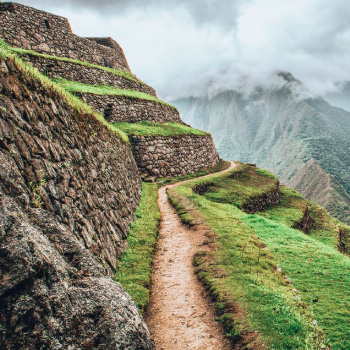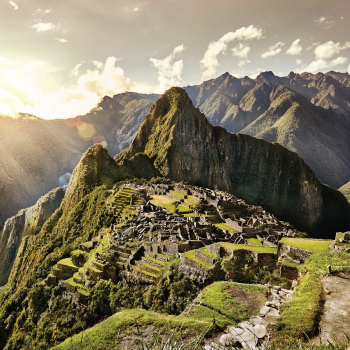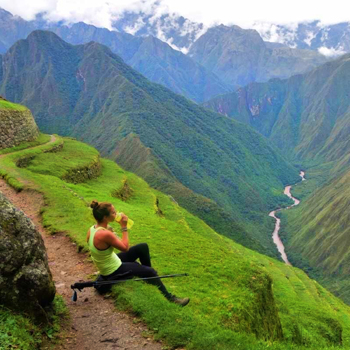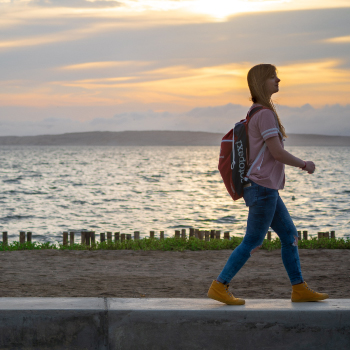Discover Sacsayhuaman in Peru
Without a doubt, the Cusco region gathers the most significant activities and archeological sites in Peru. Therefore, you shouldn’t miss the chance of visiting the enigmatic Inca ruins of Sacsayhuaman, a Ceremonial fortress that played a great role during colonization. Here you’ll learn about its history, what to see, how to get there, and more!
The Sacsayhuaman Archeological Site is located a few minutes away from the Historic Center of Cusco. There are many more tourist attractions in Cusco that you shouldn’t miss while you’re here, such as:
Keep reading and find out everything about the fortress of Sacsayhuaman and don’t miss the opportunity of knowing one of the many important places from the Inca era!
Sacsayhuaman Archeological Site
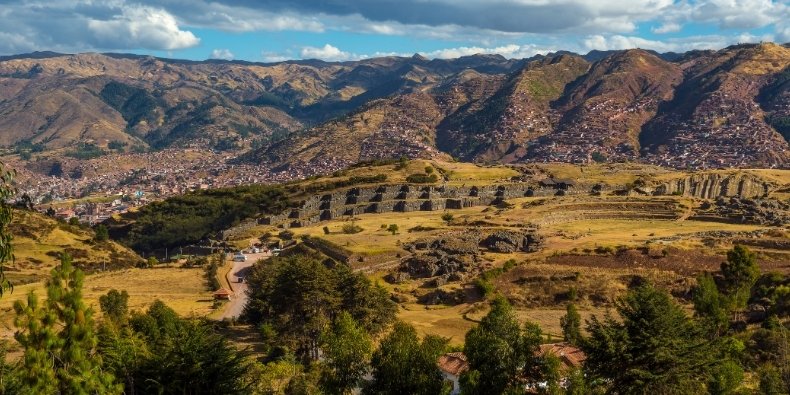
Sacsayhuaman is an Inca Ceremonial Fortress built between the XV and XVI centuries during the Inca empire. It is one of the largest and heaviest structures found inside the Cusco region. These ruins blend harmonically with the landscapes obtaining a sacred altar to nature. It is one of the main tourist attractions in Cusco, worth visiting because of the history and the role it played during the Spanish conquest.
Etymologically, Sacsay stands for Full or Satisfied, and Waman would be Hawk, meaning “The Satisfied Hawk”, is also believed that its proper translation would be Variable Hawk, which is a bird found in the Andean Highlands. Sacsayhuaman is located in the highest part of the Cusco city having an altitude of 3,700 meters above sea level, and it is only 2 kilometers away from Cusco, Peru.
Who Built Sacsayhuaman?
The Sacsayhuaman Ceremonial Fortress construction began between the XV and XVI centuries. Pachacutec‘s government started it, and it was Huayna Capac who finished it. It took around seven decades to finish this outstanding structure and about 20,000 men to complete it.
The Incas put on a great effort during the construction of this archeological site. Its architecture is typical of the Inca culture, although this time, they made it on a larger scale. The enormous rocks found in this Inca fortress were pulled with ropes by thousands of men. They also carved figures on them, as well for the tunnels entries, and religious structures that were probably related to the cult of water.
Sacsayhuaman Historical Facts
Although the goal of this structure was mainly for religious and cultural purposes, it also played a vital role during colonization since it was critical to maintaining control over the city.
-
Its higher walls can reach 9 meters of elevation, also are 5 meters wide, and have 4 meters of thickness, giving the place enough efficiency to defend itself against intruders.
-
Inside the fortress was found food and weapon storages, as well as temples of great importance as the Inti (Sun), Quilla (Moon), Chaska (Stars), and Illapa (Lightning) temples.
-
The Spaniards destroyed Sacsayhuaman to build the Spanish Cusco. Only the significantly large stones are the ones that remained in the archeological site, meaning that around 40 percent of its ancient structure is preserved at the moment.
Inti Raymi in Sacsayhuaman
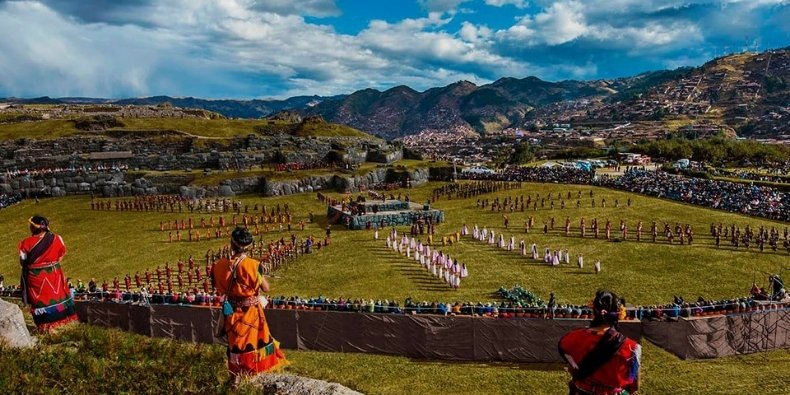
At the moment, inside the archeological park is performed the Sun Festival known as “Inti Raymi” during the winter solstice every year on the 24th of June. In honor of the Sun God Inti, local people dress in their traditional gowns and dance to their typical music, representing the tradition of their ancestors.
The Inti Raymi remains today as an important festival in Peru, which is also known by foreigners. It starts from the Qoricancha Temple early in the morning, where a person performs the summoning of the sun and then continues with the spectators towards the Sacsayhuaman park. The celebration is also part of the culture of many other indigenous communities as it is in Ecuador, Colombia, Chile, Argentina, and Bolivia.
Sacsayhuaman Entrance Fee
At the moment, for entering Sacsayhuaman Archeological Site, you will need to purchase the tourist ticket. CONSITUC has different passes depending on the time that you have and the places you want to visit, it could cost between S/. 70 – S/.120.
Take into account that you can get to Sacsayhuaman on your own, but it wouldn’t be the same without walking by the hand of an expert. If you want to know more about how to visit this archeological site, we encourage you to visit FindLocalTrips.com, a platform used to compare tour operators and prices online. Choose what’s best for you at the best price!
How to Get to Sacsayhuaman?
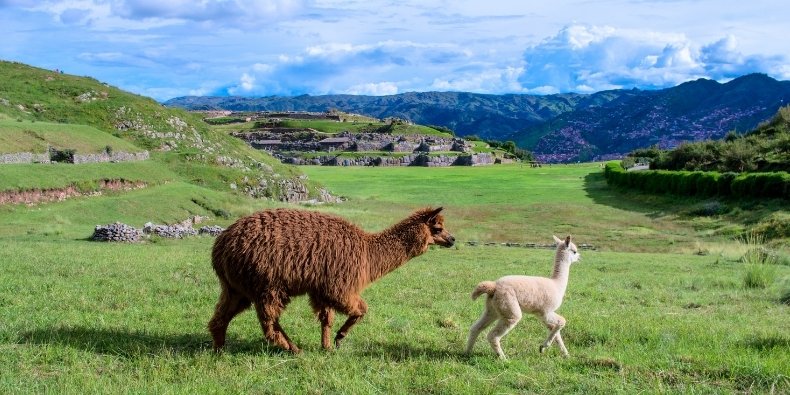
To get to Sacsayhuaman one must be in Cusco, which is currently accessible by taking a commercial flight or a bus ride. Keep reading and learn how to get to Cusco and Sacsayhuaman in the safest way possible.
-
Taking a Flight to Cusco: This is the fastest way to get to Cusco but also the most expensive since a plane ticket could cost up to 200 USD roundtrip. Keep in mind that Cusco’s airport only operates commercial flights at the moment. Therefore, you could easily take a flight from Lima to Cusco.
It is worth mentioning that Cusco has an altitude of 3,399 meters above sea level so make sure to take at least 2 days after your arrival to rest and avoid any symptoms of altitude sickness.
-
Take a bus ride to Cusco: This would be the most recommended way to approach altitude since you would be ascending slowly and gradually to Cusco. There are many public bus companies that share this route; therefore, if you’re up to this adventure, make sure to find a responsible bus company as well as taking the necessary time to compare prices and quality.
We highly recommend Peru Hop, a bus company recognized for its flexibility and safety while traveling through the country. Peru Hop’s route along the coast through Arequipa and Puno until Cusco allows you to uniquely experience the best of Peru according to your plans.
Once in Cusco: The Sacsayhuaman Archeological Site is 2 kilometers away from Cusco, Going by car would take around 15 minutes to get there from Plaza de Armas. If you are planning to go by foot, it will take about 45 minutes to walk from the main square by going through Resbalosa Street and passing by the San Cristobal Church.
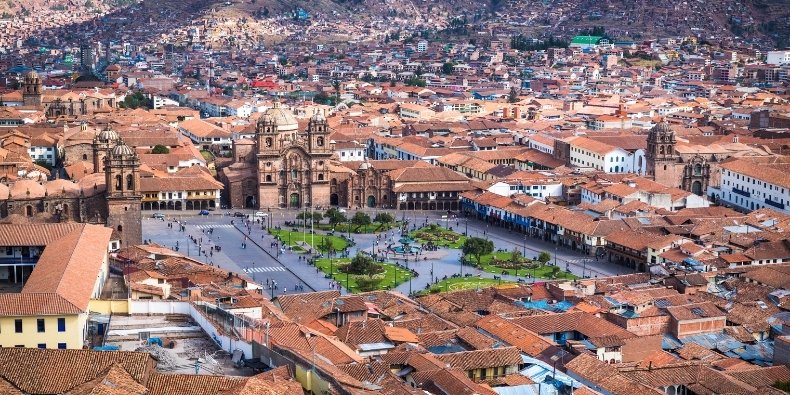
Unquestionably, this region is one of the most popular in Peru, recognized for its natural wonders, cultural expression, and most importantly, its history. Don’t miss the opportunity of visiting this and many other places such as the Rainbow Mountain while traveling through Peru and the Imperial City of Cusco!

